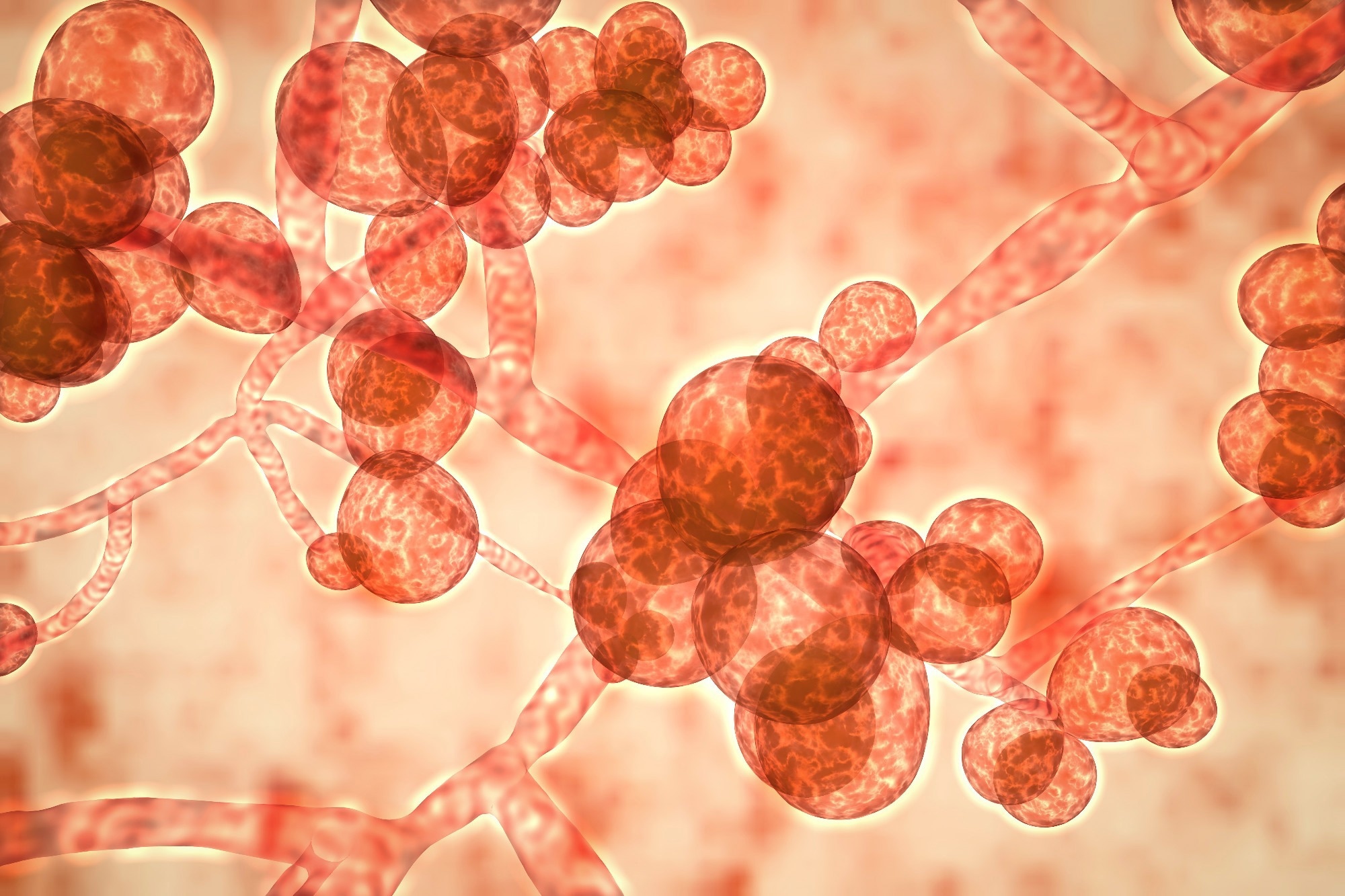In a recent study published in the Cell Host & Microbe Journal, researchers explored commensalism and pathogenesis relationships in the human mycobiome.
 Study: One population, multiple lifestyles: Commensalism and pathogenesis in the human mycobiome. Image Credit: KaterynaKon/Shutterstock.com
Study: One population, multiple lifestyles: Commensalism and pathogenesis in the human mycobiome. Image Credit: KaterynaKon/Shutterstock.com
Background
The damage response framework categorizes microbiota as microbes present in the body at a specific time. Commensalism or pathogenesis refers to the behavior of the microbes and can be determined by the outcome of their interaction with the host.
Adherence leads to commensalism, which is characterized by colonization without any apparent disease. Pathogenesis is defined as the outcome of colonization that causes damage to the host's homeostasis.
This damage can result in inflammation, disease, or tissue destruction. Candida auris, a highly feared fungus, can colonize humans without causing any symptoms in 90% of cases. This makes it difficult to detect during surveillance as it can live as a commensal organism.
Factors that influence the composition of the human microbiota
The human microbiota consists of various microorganisms such as bacteria, archaea, fungi, viruses, and protists that inhabit our bodies. Host experience with prior colonists may impact the success of an organism's colonization.
This is evidenced by the finding that C. albicans induces the production of Th17 cells that can react to multiple fungi, including Malassezia and Aspergillus.
Chemicals, such as antibiotics, antifungals, and disinfectants, can affect the microbiota in humans in unexpected ways. Antibiotics can cause an overgrowth of Candida in the mouth, vagina, or gut, which can increase the risk of fungal infection spreading through the bloodstream from the gut.
Antifungals not only treat fungal infections but also reduce gut mycobiota diversity, leading to inflammation in both the gut and lungs.
Microbial invasion or dominance by non-colonizing microbes can disrupt the microbiota. This could be because invasive species can alter disturbance regimes. Antibiotics can lead to the depletion of the commensal microbiota in the gut, allowing Candida species to thrive.
Commensal depletion can disrupt the host's immune system and overall balance. Furthermore, invasive species can alter the biotic or abiotic characteristics of an ecosystem, which can lead to the creation of a favorable environment for the expansion or invasion of other species.
Invasion can occur through the destruction of nails, teeth, or soft tissue. Additionally, invasive species can facilitate the invasion of other species by moderating interactions within the community through cooperation, competition, or metabolic cross-feeding.
C. auris model and the damage response framework
Genomic sequencing showed that four clades of C. auris from different continents, differentiated by many single-nucleotide polymorphisms (SNPs), emerged almost at the same time.
Recent reports have documented that the Coronavirus disease (COVID-19) pandemic has led to a rise in C. auris spread in acute care hospitals. Colonization cases can go unnoticed as colonies can stay on human skin for a long time without causing any visible inflammation.
C. auris can cause outbreaks in congregant settings and can lead to cycles of endemic infection.
Persistent colonization of the skin
C. auris colonizes primarily on the skin and in the nares, while bloodstream infection poses the greatest clinical risk. C. auris colonization can last for several months or up to a year without causing any symptoms in patients.
Patients in healthcare facilities with an endemic spread of infections are often colonized in multiple body sites, but no single site can identify all colonized individuals.
Studies show that colonization of C. auris in humans does not cause any visible skin inflammation, which is also observed in animal studies where there is no evidence of skin erythema or hyperkeratosis.
Colonization results in an increase of CD4+ interleukin (IL)-17A+, CD8+ IL-17A (Tc17), and CD4+ IL-17 F+ (Th17) cells along with type three innate lymphoid cells and gamma delta (gd) T cells in the skin. IL-17 signaling plays a crucial role in regulating C. auris colonization, as observed from the increase in colonization after the ablation of IL-17 signaling.
Both adaptive and innate IL-17-producing lymphoid cell populations contribute to this regulation, indicating a close interaction between the host immune system and C. auris colonization. Thus, C. auris functions as a skin commensal, despite being identified as a human pathogen.
Conclusion
The study results showed that the damage response framework categorizes microbiota behavior as either pathogenic or commensal, with the ability to transition between the two based on environmental factors such as disturbance infection, invasion by other organisms, or exposure to chemicals such as antibiotics.
The researchers believe that the inclusion of host immunological profiles in studies that evaluate risk factors involved in invasive fungal infection is necessary to better understand how the loss of tonic immunity or sepsis-induced immunosuppression elevates the likelihood of invasive fungal disease after antibiotic treatment.